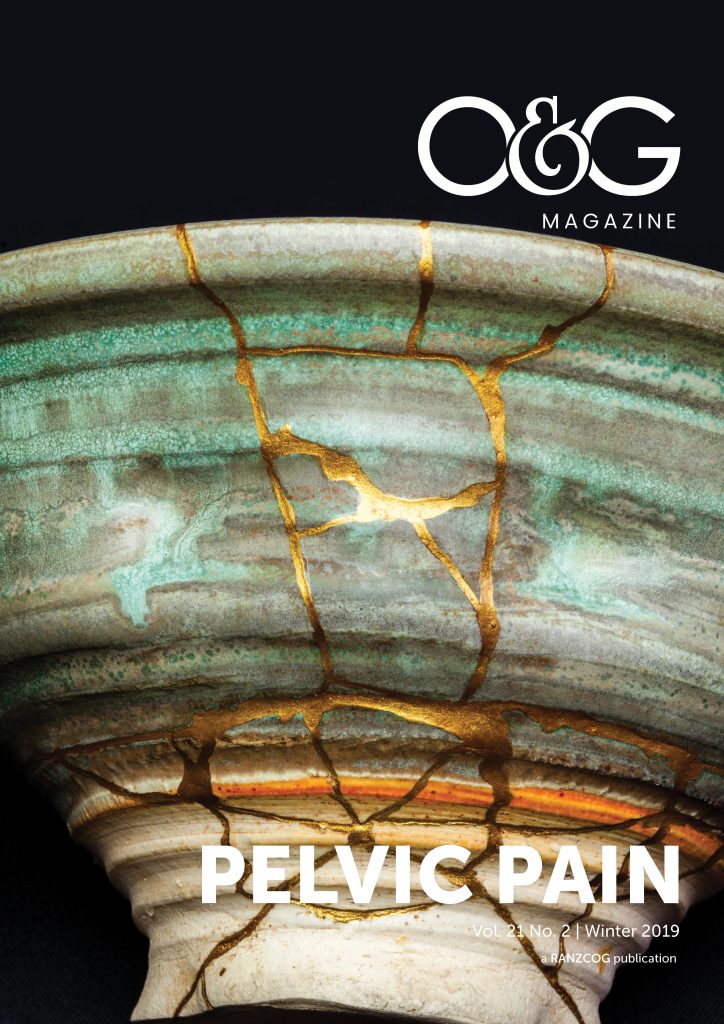The underlying causes for endometriosis remain enigmatic. The disease is defined by the presence of lesions containing tissue resembling endometrium at sites outside the uterus.1 2 Lesions mainly occur in the peritoneal cavity, but can also occur in other sites within the body. Definitive diagnosis requires the observation of lesions at the time of surgery with histological confirmation of ectopic endometrial glands and stroma.3 4 To complicate matters, there are different types of lesions and different combinations of lesion types in individual patients. Women present with symptoms of pelvic pain and infertility that overlap several other conditions and there is a poor correlation between disease symptoms, lesion type and disease severity.
Explanations for the aetiology of endometriosis must account for the origin(s) of cells responsible for initiation of lesions, the range in type and location of lesions and variable presentation of the disease between patients. Several theories have been proposed including (i) deposition of viable endometrial cells into the peritoneum through retrograde menstruation followed by adhesion and initiation of lesions (ii) activation of misplaced endometrial cells left behind from unusual differentiation and migration of Müllerian ducts during development and (iii) metaplasia or transformation of one differentiated cell type into another, for example, transformation of the coelomic epithelium covering the ovary.5 6 No one theory provides an adequate explanation for all presentations of the disease. For example, some cases of endometriosis are seen in young women before the onset of puberty. The theory of retrograde menstruation could be extended to include the retrograde transport of endometrial stem or progenitor cells increasing the chance of lesion formation, and/or activation of stem or progenitor cells shed at the time of neonatal retrograde bleeding in a proportion of babies.7 8 However, these explanations do not explain the rare occurrence of endometriosis in males. The theories are not mutually exclusive and it is likely some cases of endometriosis arise from different causes.
The disease is complex – influenced by both genetic and environmental factors – with an estimated heritability of approximated 50 per cent.9 10 In the last 10 years, genome-wide association studies (GWAS) have transformed our understanding of genetic contributions to complex diseases.11 Several GWAS for endometriosis have been published describing genetic risk factors and providing insight into the genetic architecture of the disease. The most recent published study12 included data from 11 case-controlled data sets (17 045 endometriosis cases and 191 596 controls). Results replicated nine previously reported genomic regions and identified five novel regions significantly associated with endometriosis risk. Follow-up studies have identified likely target genes in four of the 14 genomic regions associated with endometriosis.13 14 15 16 Initial results suggest genetic effects mostly influence genes associated with cell proliferation, cell adhesion and angiogenesis. However, extensive functional studies will be required to confirm the specific genes and functional changes increasing endometriosis risk.
The results show genetic risk is most likely due to a large number of common variants, each with small effects.17 There is little evidence for protein-modifying variants with moderate or large effect sizes associated with endometriosis.18 The GWAS results include women with surgically diagnosed and self-report of disease and include women with a range of different lesions types. Overall, GWAS results show good consistency between and within studies suggesting genetic risk factors are similar for women with different lesion types. However, confirmation of this conclusion must wait a formal analysis of genetic risk factors in women with different combinations of lesions types.
Environmental factors contributing to endometriosis risk include an inverse association between body mass index and endometriosis, specific dietary factors and possibly exposure to endocrine disrupting chemicals.19 Specific factors have been hard to define since environmental risk factors may operate at any time during development. Measurements at the time of diagnosis are unlikely to reflect exposures during early stages of development and questionnaire studies are subject to recall bias.
Environmental risk estimated from twin studies is the variation remaining after estimating the contribution of genetic risk factors. This represents approximately 50 per cent of risk for endometriosis.20 This can include exposures to specific environmental insults or other non-genetic risk factors. Recent studies in endometriosis have highlighted the high burden of somatic mutations in endometriosis lesions.21 22 23 Somatic mutations were identified in 79 per cent of deep infiltrating endometriosis lesions, with 21 per cent of lesions harbouring known somatic cancer driver mutations.24 The somatic mutations are DNA changes in a small number of specific cells, distinct from genetic risk factors and part of the ‘environmental’ or non-genetic risk. They may result from specific environmental exposures (like the role of sun exposure causing DNA damage in skin and increasing the risk for melanoma and non-melanoma skin cancers) or from errors in DNA replication with constant tissue regeneration in the endometrium at each menstrual cycle and high proliferation rates in specific cell types.
We have not yet solved the riddle of endometriosis, but recent discoveries from genetics and genomics provide important clues about the origins of the disease and new avenues for study. The discovery that the same somatic mutations seen in lesions are already found in cells in endometrial glands within the endometrium gives strong support to the view that endometrial tissue transported to the peritoneum by retrograde menstruation is an important source of cells initiating endometriosis lesions.25 Genetic risk factors and somatic mutations may both contribute to survival of endometrial cells during this process and subsequent initiation and progression of lesions. Future work should define the target genes and functional consequences of known genetic risk factors and overlap with the spectrum of somatic mutations in both lesions and eutopic endometrium. Armed with knowledge of fundamental genomic changes responsible for disease initiation and progression, we will be able to develop better methods of diagnosis and novel and more personalised treatments.
References
- LC Giudice. Clinical practice. Endometriosis. The New England Journal of Medicine. 2010;362(25):2389-98.
- KT Zondervan, CM Becker, K Koga, et al. Endometriosis. Nat Rev Dis Primers. 2018;4(1):9.
- LC Giudice. Clinical practice. Endometriosis. The New England Journal of Medicine. 2010;362(25):2389-98.
- KT Zondervan, CM Becker, K Koga, et al. Endometriosis. Nat Rev Dis Primers. 2018;4(1):9.
- S Gordts, P Koninckx, I Brosens. Pathogenesis of deep endometriosis. Fertil Steril. 2017;108(6):872-85.
- P Vercellini, P Vigano, E Somigliana, L Fedele. Endometriosis: pathogenesis and treatment. Nat Rev Endocrinol. 2014;10(5):261-75.
- S Gordts, P Koninckx, I Brosens. Pathogenesis of deep endometriosis. Fertil Steril. 2017;108(6):872-85.
- P Vercellini, P Vigano, E Somigliana, L Fedele. Endometriosis: pathogenesis and treatment. Nat Rev Endocrinol. 2014;10(5):261-75.
- R Saha, HJ Pettersson, P Svedberg, et al. Heritability of endometriosis. Fertil Steril. 2015;104(4):947-52.
- SA Treloar, DT O’Connor, VM O’Connor, NG Martin. Genetic influences on endometriosis in an Australian twin sample. Fertil Steril. 1999;71(4):701-10.
- PM Visscher, NR Wray, Q Zhang, et al. 10 Years of GWAS Discovery: Biology, Function, and Translation. American Journal of Human Genetics. 2017;101(1):5-22.
- Y Sapkota, V Steinthorsdottir, AP Morris, et al. Meta-analysis identifies five novel loci associated with endometriosis highlighting key genes involved in hormone metabolism. Nat Commun. 2017;8:15539.
- JN Fung, SJ Holdsworth-Carson, Y Sapkota, et al. Functional evaluation of genetic variants associated with endometriosis near GREB1. Hum Reprod. 2015;30(5):1263-75.
- SJ Holdsworth-Carson, JN Fung, HT Luong, et al. Endometrial vezatin and its association with endometriosis risk. Hum Reprod. 2016;31(5):999-1013.
- H Nakaoka, A Gurumurthy, T Hayano, et al. Allelic Imbalance in Regulation of ANRIL through Chromatin Interaction at 9p21 Endometriosis Risk Locus. PLoS Genet. 2016;12(4):e1005893.
- JE Powell, JN Fung, K Shakhbazov, et al. Endometriosis risk alleles at 1p36.12 act through inverse regulation of CDC42 and LINC00339. Hum Mol Genet. 2016;25(22):5046-58.
- Y Sapkota, V Steinthorsdottir, AP Morris, et al. Meta-analysis identifies five novel loci associated with endometriosis highlighting key genes involved in hormone metabolism. Nat Commun. 2017;8:15539.
- Y Sapkota, I Vivo, V Steinthorsdottir, et al. Analysis of potential protein-modifying variants in 9000 endometriosis patients and 150000 controls of European ancestry. Sci Rep. 2017;7(1):11380.
- KT Zondervan, CM Becker, K Koga, et al. Endometriosis. Nat Rev Dis Primers. 2018;4(1):9.
- SA Treloar, DT O’Connor, VM O’Connor, NG Martin. Genetic influences on endometriosis in an Australian twin sample. Fertil Steril. 1999;71(4):701-10.
- MS Anglesio, N Papadopoulos, A Ayhan, et al. Cancer-Associated Mutations in Endometriosis without Cancer. The New England Journal of Medicine. 2017;376(19):1835-48.
- M Noe, A Ayhan, TL Wang, IM Shih. Independent development of endometrial epithelium and stroma within the same endometriosis. J Pathol. 2018;245(3):265-9.
- K Suda, H Nakaoka, K Yoshihara, et al. Clonal Expansion and Diversification of Cancer-Associated Mutations in Endometriosis and Normal Endometrium. Cell Rep. 2018;24(7):1777-89.
- MS Anglesio, N Papadopoulos, A Ayhan, et al. Cancer-Associated Mutations in Endometriosis without Cancer. The New England Journal of Medicine. 2017;376(19):1835-48.
- K Suda, H Nakaoka, K Yoshihara, et al. Clonal Expansion and Diversification of Cancer-Associated Mutations in Endometriosis and Normal Endometrium. Cell Rep. 2018;24(7):1777-89.






Leave a Reply